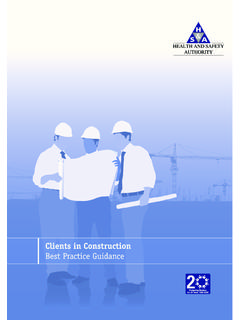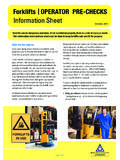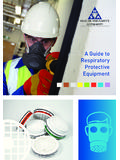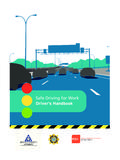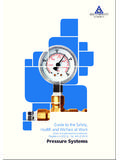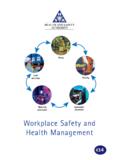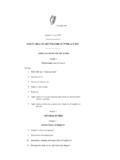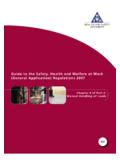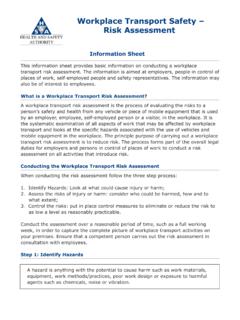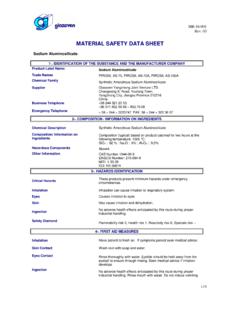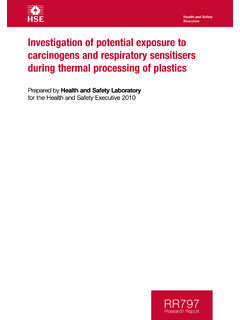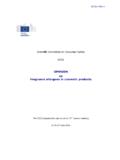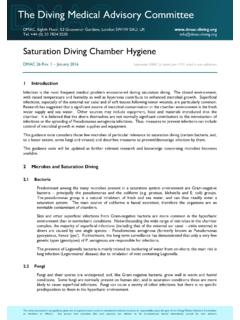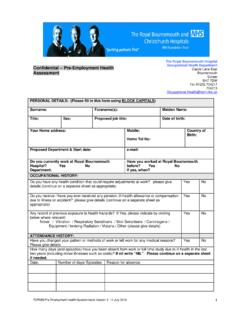Transcription of CLP Regulation (EC) No. 1272 / 2008
1 CLP Regulation (EC) No. 1272 / 2008on the classification, labelling and packagingof substances and mixturesGHS08 GHS08 GHS07 GHS08 GHS08 Unstable explosive Unst. Expl. H200 Unstable explosive Division Expl. H201 Explosive; mass explosion hazard Division Expl.
2 Danger H202 Explosive; severe projection hazard Division Expl. H203 Explosive; fire, blast or projection hazard Division Expl. Warning H204 Fire or projection hazard Division Expl. No Pictogram Danger H205 May mass explode in fire Division Expl. No Pictogram - - No hazard statementFlammableGases Category 1 Flam. Gas 1 Danger H220 Extremely flammable gas Category 2 Flam. Gas 2 No Pictogram Warning H221 Flammable gas Category A Chem.
3 Unst. Gas A No Pictogram - H230 May react explosively even in the absence of air Category B Chem. Unst. Gas B No Pictogram - H231 May react explosively even in the absence of air at elevated pressure and/or temperature Category 1 Aerosol 1 Danger H222 Extremely flammable aerosol Category 2 Aerosol 2 Warning H223 Flammable aerosol Category 3 Aerosol 3 No Pictogram Warning H229 Pressurised container.
4 May burst if heatedOxidising Gases Category 1 Ox. Gas 1 Danger H270 May cause or intensify fire; oxidiser Compressed gas H280 Contains gas under pressure; may explode if heated H281 Contains refrigerated gas; may cause cryogenic burns or injury. Dissolved gas H280 Contains gas under pressure; may` explode if heated (1) = The hazard class Gases under Pressure is subdivided into Groups (not Categories ) Category 1 Flam.
5 Liq. 1 Danger H224 Extremely flammable liquid and vapour Category 2 Flam. Liq. 2 H225 Highly flammable liquid and vapour Category 3 Flam. Liq. 3 Warning H226 Flammable liquid and vapourFlammable Category 1 Flam. Sol. 1 Danger H228 Flammable solid Category 2 Flam. Sol. 2 Warning Type A Self-react. A Danger H240 Heating may cause an explosion Org.
6 Perox. A Type B B H241 Heating may cause a fire or explosion Org. Perox. B Type C and D Self-react. C&D Danger H242 Heating may cause a fire Org. Perox. C&D Type E and F Self-react. E&F Warning Org. Perox. E&F Type G Self-react.
7 G Org. Perox. G No Pictogram - No hazard statement (2) = Two separate hazard classes have the same categories (and are therefore grouped).Pyrophoric Liquids Category 1 Pyr. Liq. 1 Danger H250 Catches fire spontaneously if exposed to airPyrophoric Solids Category 1 Pyr. Sol. 1 Category 1 Self-heat.
8 1 Danger H251 Self-heating; may catch fire Category 2 Self-heat. 2 Warning H252 Self-heating in large quantities; may catch fire Category 1 Water-react. 1 Danger H260 In contact with water releases flammable gases which may ignite spontaneously Category 2 Water-react.
9 2 Danger H261 In contact with water releases Category 3 Water-react. 3 Warning flammable gases Category 1 Ox. Liq. 1 Danger H271 May cause fire or explosion; strong oxidiser Ox. Sol. 1 Category 2 Ox. Liq. 2 Danger H272 May intensify fire; oxidiser Ox. Sol. 2 Category 3 Ox. Liq. 3 Warning Ox.
10 Sol. 3 Category 1 Met. Corr. 1 Warning H290 May be corrosive to metals Category 1 Acute Tox. 1 H300 Category 2 Acute Tox. 2 H310 H330 Category 3 Acute Tox.
